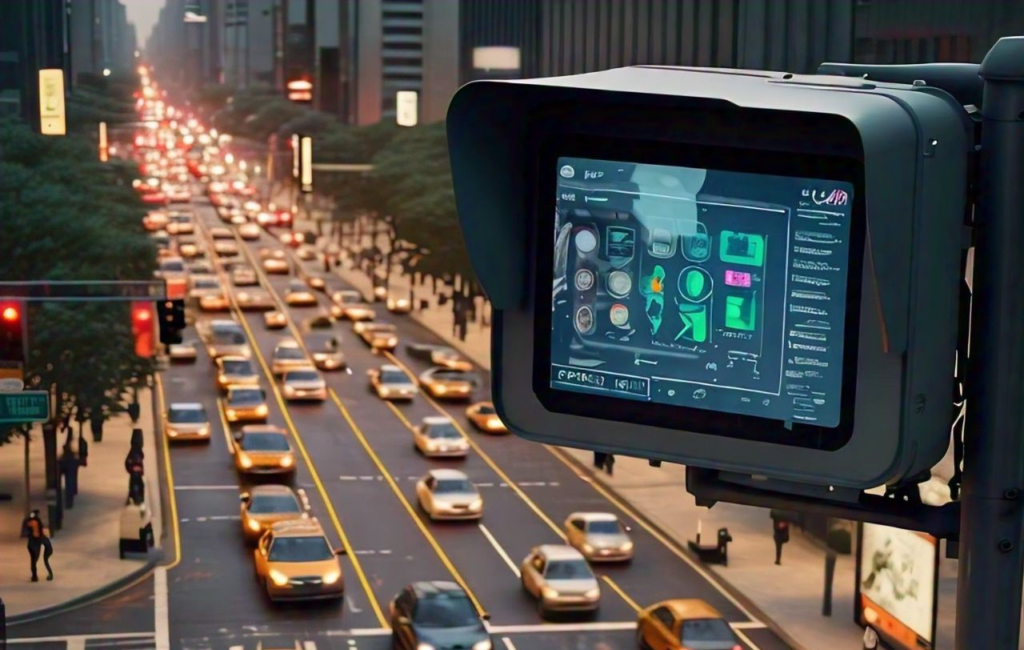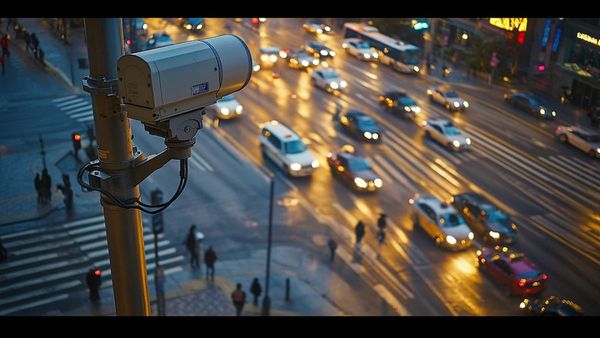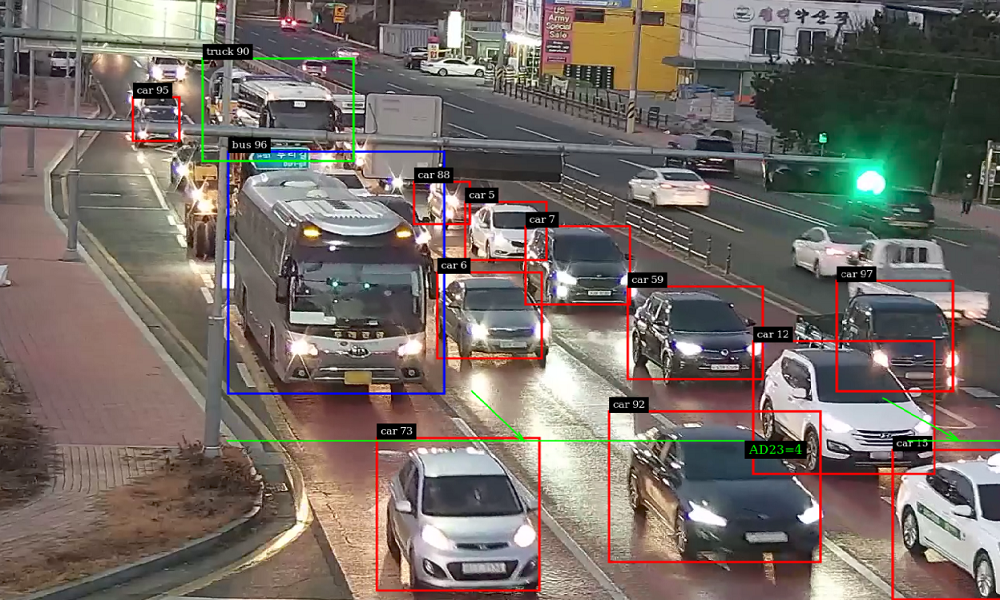Kuwait, a country known for its rapid modernization, is embracing the power of artificial intelligence (AI) to transform its urban traffic system. With urbanization increasing and the number of vehicles on the roads rising every day, the traditional methods of traffic management are no longer sufficient. Kuwait has recognized the potential of AI to solve complex traffic challenges, making commutes smoother, reducing congestion, and enhancing road safety.
By integrating AI into its transportation infrastructure, Kuwait is not only addressing immediate traffic issues but also laying the groundwork for a smarter, more sustainable city. The adoption of these technologies reflects a broader vision of modernizing public services while ensuring efficiency, safety, and environmental sustainability.
AI-Powered Traffic Monitoring
One of the most significant advancements in Kuwait’s urban traffic management is the implementation of AI-powered monitoring systems. These systems rely on a network of smart cameras and sensors placed across critical road intersections. Unlike conventional traffic cameras, AI-enabled devices can analyze real-time data, detect traffic density, and even identify potential hazards.
The ability of AI to process vast amounts of data quickly means that traffic authorities can respond to congestion or accidents almost instantly. By predicting traffic patterns based on historical and real-time data, AI systems can optimize traffic light sequences, reduce waiting times, and prevent bottlenecks. This not only enhances the overall flow of vehicles but also improves fuel efficiency and reduces unnecessary emissions.
Smart Traffic Lights and Adaptive Control
Kuwait has also introduced smart traffic lights that adjust dynamically according to current road conditions. Unlike fixed-timing traffic lights, these AI-controlled signals analyze the number of vehicles waiting at intersections and adjust the green light duration accordingly. This adaptive system ensures that traffic moves efficiently during both peak and off-peak hours.
The impact of smart traffic lights extends beyond congestion reduction. By minimizing idle time at intersections, the system contributes to lower carbon emissions, supporting Kuwait’s broader environmental goals. Furthermore, adaptive traffic control reduces driver frustration, leading to safer driving behavior and fewer road accidents.
Predictive Analytics for Better Urban Planning
AI is not just solving traffic problems in the moment it’s helping Kuwait plan for the future. Predictive analytics enables city planners to anticipate where traffic congestion is likely to occur and make informed decisions about infrastructure development.
By analyzing traffic patterns over weeks, months, or even years, AI can identify areas that may require road expansions, additional lanes, or alternative routes. This data-driven approach ensures that investments in urban infrastructure are targeted and efficient. Citizens benefit from fewer traffic jams, smoother commutes, and an overall improved quality of life.

Integration with Public Transportation
Another remarkable aspect of Kuwait’s AI-driven traffic management is its integration with public transportation systems. Buses, trams, and other public transit vehicles are now being monitored using AI tools to ensure timely arrivals and departures. This coordination helps reduce traffic congestion caused by delays and promotes the use of public transportation as a reliable alternative to private cars.
AI can also optimize bus routes in real-time, redirecting vehicles to less crowded roads or adjusting schedules to meet demand. This dynamic planning creates a seamless experience for commuters and encourages more people to opt for eco-friendly transport options, further contributing to sustainability goals.
Enhancing Road Safety with AI
Safety is a key benefit of Kuwait’s AI traffic initiatives. Intelligent systems can detect speeding, erratic driving, or vehicles violating traffic rules and immediately alert authorities. In addition, AI can monitor pedestrian crossings, ensuring that drivers yield appropriately and reducing accidents in densely populated areas.
AI’s predictive capabilities also help anticipate risky traffic scenarios before they escalate. For instance, the system can detect patterns that often precede accidents, such as sudden stops or high congestion zones, allowing authorities to take preventive measures. This proactive approach is a significant step toward making Kuwait’s roads safer for both drivers and pedestrians.
Reducing Environmental Impact
Traffic congestion is a major contributor to air pollution, and Kuwait is addressing this challenge through AI innovation. By improving traffic flow and reducing idle times, AI systems help lower vehicle emissions significantly. Optimized traffic lights, smoother routes, and fewer traffic jams all contribute to a cleaner, healthier urban environment.
Moreover, AI’s integration with public transport encourages people to leave their cars behind, which further reduces carbon emissions. Kuwait’s commitment to using AI for environmental benefits showcases a vision of urban development that balances growth with sustainability.
Real-Time Incident Management
Accidents and roadblocks can disrupt traffic for hours if not managed effectively. Kuwait’s AI systems excel in real-time incident management by quickly detecting accidents, vehicle breakdowns, or road hazards. Authorities receive immediate notifications and can respond swiftly to clear obstacles and redirect traffic.
This real-time management reduces delays for other road users and prevents secondary accidents caused by sudden congestion. By maintaining a continuous flow of traffic even during unexpected events, AI ensures a safer and more reliable transportation network.

Data-Driven Decision Making
At the heart of Kuwait’s AI-driven traffic revolution is the principle of data-driven decision making. Every traffic light adjustment, bus rerouting, and safety alert is based on precise data analysis. This approach minimizes human error and ensures that decisions are informed, timely, and effective.
Data-driven traffic management also allows authorities to track long-term trends, assess the effectiveness of interventions, and refine strategies continually. The result is a dynamic, intelligent traffic system that evolves alongside the city’s growth and changing needs.
Public Engagement and Awareness
Kuwait is also using AI to engage citizens in traffic management. Real-time traffic updates, smart navigation apps, and alerts about congestion or road closures empower drivers to make better decisions. AI-driven mobile applications can suggest alternate routes, provide estimated arrival times, and even warn of potential hazards ahead.
By involving the public in traffic management, Kuwait not only enhances efficiency but also promotes a culture of shared responsibility. Citizens become active participants in maintaining smooth traffic flow, which strengthens the overall effectiveness of AI systems.
Future Prospects: Towards a Smart City
The AI initiatives in Kuwait’s urban traffic management are just the beginning of a broader vision for smart city development. As technology continues to advance, AI could integrate with autonomous vehicles, smart parking systems, and even city-wide energy management solutions.
The potential for further innovation is enormous. With AI at the core, Kuwait is positioning itself as a leader in sustainable, efficient, and technologically advanced urban living. Citizens can look forward to a city where commuting is faster, safer, and environmentally friendly, while authorities gain tools to plan and manage urban spaces with unprecedented precision.
Conclusion: A Model for Modern Cities
Kuwait’s use of AI to manage urban traffic flow demonstrates the transformative power of technology in modern cities. From adaptive traffic lights and predictive analytics to real-time incident management and public engagement, AI is revolutionizing how people move through urban spaces.
By focusing on efficiency, safety, and sustainability, Kuwait is creating a model that other cities around the world can look to for inspiration. The successful integration of AI into traffic management is more than just a technological achievement it represents a commitment to improving the daily lives of citizens, protecting the environment, and building a smarter, more connected future.
Kuwait’s journey shows that with innovation, vision, and determination, even the most complex urban challenges can be solved. AI is not just managing traffic it is reshaping the way cities operate, ensuring a brighter and more efficient urban life for all.
Also Read – Smart Homes in Kuwait: Transforming Residential Living with Technology



